- Home
- About Us
- Chairman’s Desk
- Countries
- Services
- Gallery
- Admissions
- Bon Voyage
- Convocation
- Academic Selection
- Russian Victory Day
- Sports
- En Route Russia
- Our Students
- Our Students @ Work
- Cultural Programs
- University Toppers
- Free MCI Coaching Session
- Forum of Russian @ former USSR graduates of India -2017
- Latest Technology & Innovation for Medical practical & Teaching at Stavropol
- Credentials
- Testimonials
- Blog
- Reach Us

blog
Blog
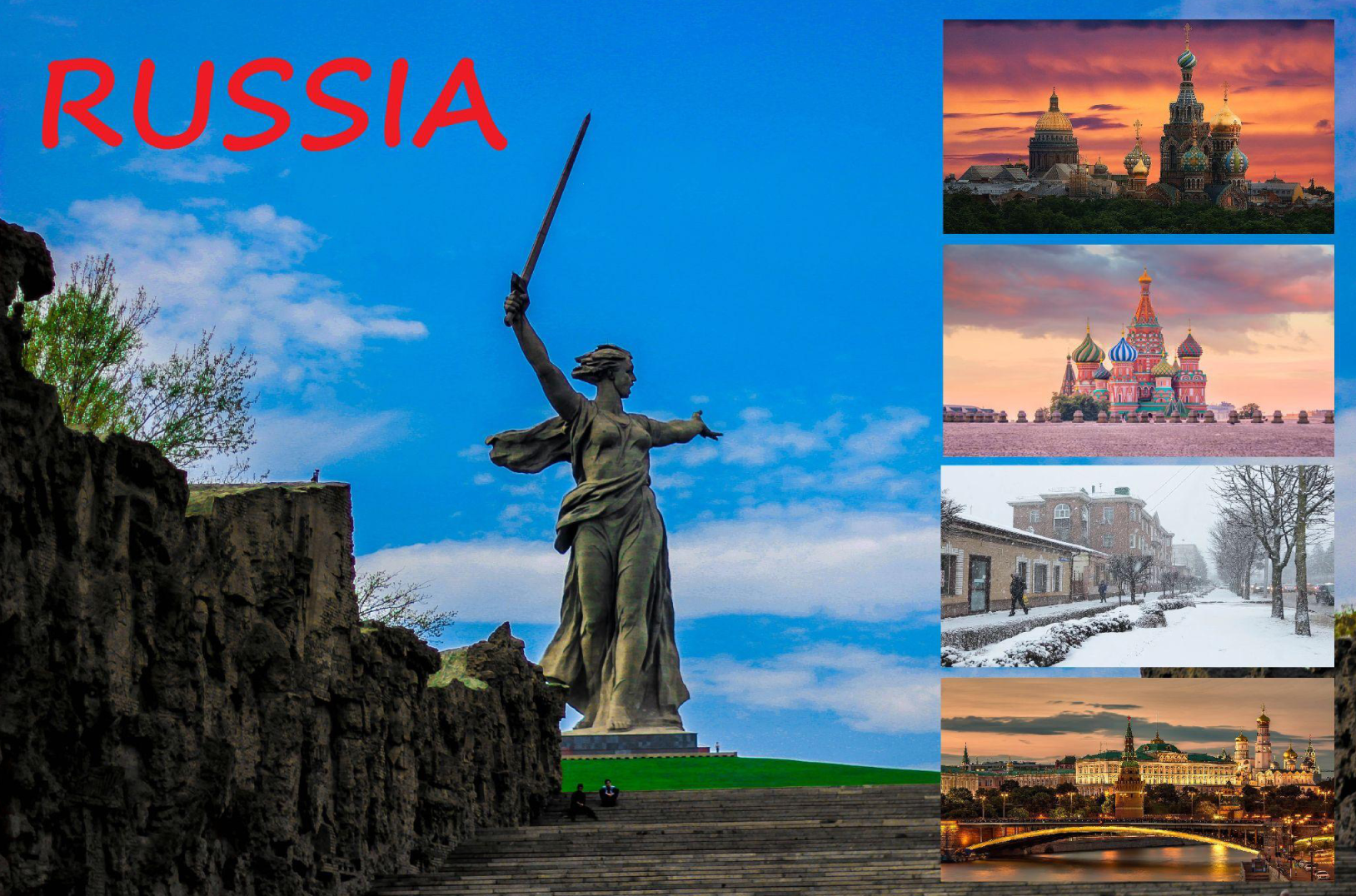
Russian Medical Universities for MBBS: A Viable Option for Middle-Class Indian Students Medical Graduates
Pursuing a career in medicine is a dream for many Indian students. However, securing a seat in a reputable medical college in India can be a daunting task due to the intense competition and limited number of seats available. For middle-class families, this challenge is even more pronounced due to the high cost of private medical education in India. For students who have cleared NEET-UG but couldn’t secure a rank to get into a government medical college, studying MBBS in Russia presents a compelling alternative. Here’s why: Affordable Tuition Fees
One of the most significant advantages of studying MBBS in Russia is the affordability. Russian medical universities offer high-quality education at a fraction of the cost compared to private medical colleges in India. Tuition fees in Russia range from $2,500 to $6,000 per year, making it a viable option for middle-class families. World-Class Education and Infrastructure Russian medical universities are known for their excellent educational standards and state-of-the-art infrastructure. Universities such as the Stavropol State Medical University (StSMU), North Caucasus State Medical Academy, Moscow First State Medical University, Volgograd State Medical University(VSMU) and Saint Petersburg State Medical University & many more, have a long history of providing quality medical education. These institutions are equipped with modern laboratories, extensive libraries, and highly qualified faculty members.
Recognized Degrees Medical degrees from Russian universities are recognized globally. Many Russian medical universities are listed in the World Directory of Medical Schools (WDOMS) and are recognized by the Medical Council of India (MCI) and other global medical councils. This recognition ensures that students who graduate from Russian universities can return to India and practice medicine after passing the Foreign Medical
Graduate Examination (FMGE),now National Exit Test(NEXT). English-Taught Programs
Many Russian medical universities offer MBBS programs in English, which is a significant advantage for international students. This eliminates the language barrier and allows students to focus on their studies without the additional burden of learning a new language. Simple Admission Process The admission process for MBBS in Russia is straightforward. Students who have qualified NEET-UG and have completed their 12th grade with Physics, Chemistry, and Biology are eligible to apply. The process involves minimal documentation and does not require any entrance examination apart from NEET-UG, making it accessible to a wider range of students. Scholarships and Financial AidSome Russian universities and government bodies offer scholarships and financial aid to international students based on merit. This can further reduce the financial burden on middle-class families, making quality medical education more accessible. Accommodation and Living Expenses The cost of living in Russia is relatively low compared to many Western countries. Most universities provide hostel facilities to international students, which are affordable and well-maintained. Additionally, living expenses such as food, transportation, and other utilities are reasonable, making it easier for students to manage their finances. Conclusion: For Indian students from middle-class families who have qualified NEET-UG but couldn’t secure a seat in an Indian medical college, pursuing an MBBS in Russia is a practical and attractive option. With affordable tuition fees, world-class education, recognized degrees, and a straightforward admission process, Russian medical universities offer a viable path to achieving their dream of becoming a doctor. By choosing to study in Russia, students not only receive a quality education but also gain a rich cultural experience that can be beneficial in their future careers. Note: This blog is solely for Information purpose*

Understanding the NEXT Exam in India: Benefits for Foreign Medical Graduates
The National Exit Test (NEXT) is a significant development in India’s medical education landscape, introduced to streamline the process of medical licensing and postgraduate admissions. This single-window examination aims to standardize the assessment of medical graduates, ensuring uniformity in the evaluation process. For foreign medical graduates (FMGs), NEXT is particularly beneficial, simplifying their
path to practicing medicine in India. Here’s a detailed look at what NEXT entails and how it benefits foreign graduates. What is the NEXT Exam?
NEXT, also known as the National Exit Test, is a mandatory exam for all MBBS graduates in India and foreign medical graduates who wish to practice medicine in India. It serves two primary purposes: 1. Licensing Examination: NEXT acts as a qualifying exam for Indian medical graduates and FMGs, replacing the Foreign Medical Graduate Examination (FMGE). It ensures that all practicing doctors in India meet a consistent standard of knowledge and skills. 2. Entrance for Postgraduate Courses: NEXT also functions as the entrance test for postgraduate medical courses (MD/MS) in India, replacing the National Eligibility-cum-Entrance Test for Postgraduates (NEET-PG). Structure of the NEXT Exam The NEXT exam is divided into two parts: – NEXT 1: This part is a theoretical exam taken after the final year of MBBS. It tests the knowledge of medical graduates across various subjects. NEXT 1 is conducted in a computer-based format and includes multiple-choice questions (MCQs). – NEXT 2: This is a practical/clinical and viva voce examination conducted after completing the internship. NEXT 2 evaluates the clinical skills and practical knowledge of candidates. Benefits of NEXT for Foreign Medical Graduates For foreign medical graduates, the NEXT exam offers several advantages: 1. Uniform Assessment Standard: NEXT ensures that FMGs are assessed on the same criteria as their Indian counterparts, promoting fairness and uniformity in the evaluation process. This standardization helps in maintaining the quality of medical professionals in the country. 2. Simplified Licensing Process: By replacing the FMGE, NEXT provides a more streamlined and efficient pathway for FMGs to obtain their license to practice in India. FMGs need to clear NEXT 1 and complete their internship to be eligible for NEXT2, after which they can practice medicine in India. 3. Integrated Pathway for PG Admissions: Since NEXT also serves as the entrance exam for postgraduate courses, FMGs no longer need to prepare for multiple exams. Clearing NEXT enables them to pursue postgraduate medical education in
India, simplifying their career progression. 4. Enhanced Career Opportunities: Successfully passing the NEXT exam opens up a plethora of career opportunities for FMGs in India. They can choose to practice medicine, pursue further specialization through postgraduate courses, or even
venture into academics and research. 5. Focus on Clinical Skills: The inclusion of a practical component in NEXT (NEXT 2) ensures that FMGs are evaluated not just on theoretical knowledge but also on their clinical skills and ability to handle real-life medical scenarios. This holistic assessment better prepares them for the demands of medical practice in India. 6. Global Recognition: The standardized evaluation through NEXT can also enhance the global recognition of Indian medical education and training standards. This can be beneficial for FMGs who wish to explore opportunities abroad in the future. Preparing for the NEXT ExamPreparation for the NEXT exam requires a comprehensive understanding of the medical curriculum, strong theoretical knowledge, and practical clinical skills. Here are some tips for FMGs: ● Revise Medical Curriculum: Thoroughly review the subjects covered in the MBBS curriculum, focusing on core concepts and clinical applications.
● Practice MCQs: Regular practice of MCQs helps in understanding the exam pattern and improves time management skills.
● Clinical Practice: Engage in practical training and internships to enhance clinical skills and gain hands-on experience.
● Join Coaching Programs: Consider enrolling in coaching programs that specialize in NEXT preparation to receive structured guidance and support. Conclusion:The introduction of the NEXT exam marks a significant step forward in standardizing medical education and licensing in India. For foreign medical graduates, NEXT offers a clear and streamlined pathway to practice medicine in India, ensuring they are evaluated on par with their Indian counterparts. With its focus on both theoretical knowledge and clinical skills, NEXT not only simplifies the licensing and postgraduate admission processes but also ensures that all practicing doctors in India meet a high standard of competence and professionalism. By preparing diligently and leveraging the resources available, FMGs can successfully navigate the NEXT exam and embark on a fulfilling medical career in India. Note: This blog is solely for Information purpose*

Preparing for NEET 2024Tips and Career Options in Russia
Preparing for the National Eligibility cum Entrance Test (NEET) 2024 is a significant step for aspiring medical students in India. NEET is a highly competitive exam, and thorough preparation is essential to secure a seat in a reputable medical college. Additionally, exploring career options abroad, particularly in Russia, can be a viable choice for students across different financial backgrounds. Here are some preparation tips and insights into career opportunities in Russia after clearing NEET. Preparation Tips for NEET 2024 1. Understand the Syllabus: Familiarize yourself with the NEET syllabus, which covers Physics, Chemistry, and Biology. Ensure you know the topics and weightage of each subject 2. Create a Study Plan: Develop a detailed study plan that allocates time for each subject and topic. Include regular revisions and practice tests in your schedule. 3. Use Quality Study Materials: Select the right textbooks and reference materials. NCERT books are essential for building strong foundational knowledge. 4. Practice Regularly:Solve previous years’ NEET papers and take mock tests to understand the exam pattern and improve your time management skills. 5. Focus on Weak Areas: Identify your weak subjects or topics and dedicate extra time to strengthen them. Seek help from teachers or peers if needed. 6. Stay Healthy: Maintain a balanced diet, exercise regularly, and ensure adequate sleep to keep your mind and body fit for studying. 7. Stay Positive and Motivated: Keep a positive attitude and stay motivated throughout your preparation journey. Join study groups or forums to stay engaged and motivated. Career Options in Russia After NEETFor students who wish to pursue medical education and careers abroad, Russia presents an excellent opportunity. Here are some reasons and options for considering Russia: 1. Affordable Education: Russian medical universities offer quality education at a relatively lower cost compared to many private medical colleges in India. This makes it accessible for students from diverse financial backgrounds. 2. Globally Recognized Degrees: Medical degrees from Russia are recognized by international bodies such as the World Health Organization (WHO) and the Medical Council of India (MCI). Graduates can practice medicine globally after passing the relevant licensing exams. 3. Advanced Infrastructure: Russian universities are equipped with modern infrastructure, advanced laboratories, and experienced faculty, ensuring a comprehensive medical education. 4. English-Medium Programs: Many Russian universities offer medical programs in English, eliminating language barriers for international students. 5. Cultural Experience: Studying in Russia provides a unique cultural experience, enhancing personal growth and global exposure. 6. Post-Graduation Opportunities: After completing MBBS in Russia, students can pursue postgraduate studies (MD/MS) either in Russia or other countries, broadening their career prospects. Financial Considerations – Scholarships and Financial Aid: Many Russian universities offer scholarships and financial aid to international students based on merit and need, making education moreaffordable. – Part-Time Work: International students can work part-time to support their living expenses, although it is important to balance work and study commitments Conclusion: Preparing for NEET 2024 requires dedication, strategic planning, and consistent effort. Exploring career options in Russia can be a viable and rewarding choice for medical aspirants, providing quality education and diverse career opportunities within a reasonable budget. With the right preparation and information, students can achieve their academic and professional goals in the medical field Note: this blog is only for information purpose*

Exploring the Historical Tapestry and Medical Excellence of Stavropol City
Nestled in the picturesque landscapes of Russia lies Stavropol, a city that intertwines a rich historical legacy with modern advancements, particularly in the field of healthcare. Founded as a fortress town in the 18th century, Stavropol has evolved into a dynamic urban center, serving as a crucible for culture, education, and medical innovation. Historical Reverberations: Stavropol’s history is a narrative woven with resilience and cultural diversity. From its origins as a strategic stronghold in the Caucasus to its pivotal role during pivotal historical moments, including the Russian Revolution and World War II, the city has borne witness to epochs of change and progress. Development Dynamics: In contemporary times, Stavropol stands as a testament to Russia’s developmental strides. Its urban landscape blends architectural heritage with modern infrastructure, offering residents and visitors alike a glimpse into its storied past and promising future. The city’s strategic location as a gateway to the Caucasus region has facilitated economic growth, making it a vital hub for trade and commerce. Pioneering Healthcare Advancements: One of Stavropol’s most notable contributions lies in the realm of healthcare. Bolstered by a commitment to excellence, Stavropol State Medical University has emerged as a cornerstone of medical education and research. The university’s illustrious faculty and state-of-the-art facilities foster an environment conducive to innovation and discovery, propelling forward breakthroughs in medical science. Stavropol State Medical University: Established with a vision to nurture the next generation of healthcare professionals, Stavropol State Medical University has continually raised the bar in medical education. Its comprehensive curriculum, which integrates theoretical knowledge with practical experience, ensures that graduates are equipped to meet the evolving demands of the healthcare landscape. Moreover, the university’s research initiatives span a myriad of disciplines, from oncology to infectious diseases, driving forward advancements that have tangible impacts on patient care and public health. With a commitment to community engagement and global collaboration, Stavropol State Medical University serves as a beacon of medical excellence, both nationally and internationally. Conclusion: In conclusion, Stavropol city’s journey from its historical roots to its present-day prominence is a testament to the resilience and ingenuity of its people. As it continues to chart new frontiers in healthcare and beyond, Stavropol remains an embodiment of progress, poised to leave an indelible mark on the tapestry of Russian history and innovation.Note: This blog is solely for information purpose*
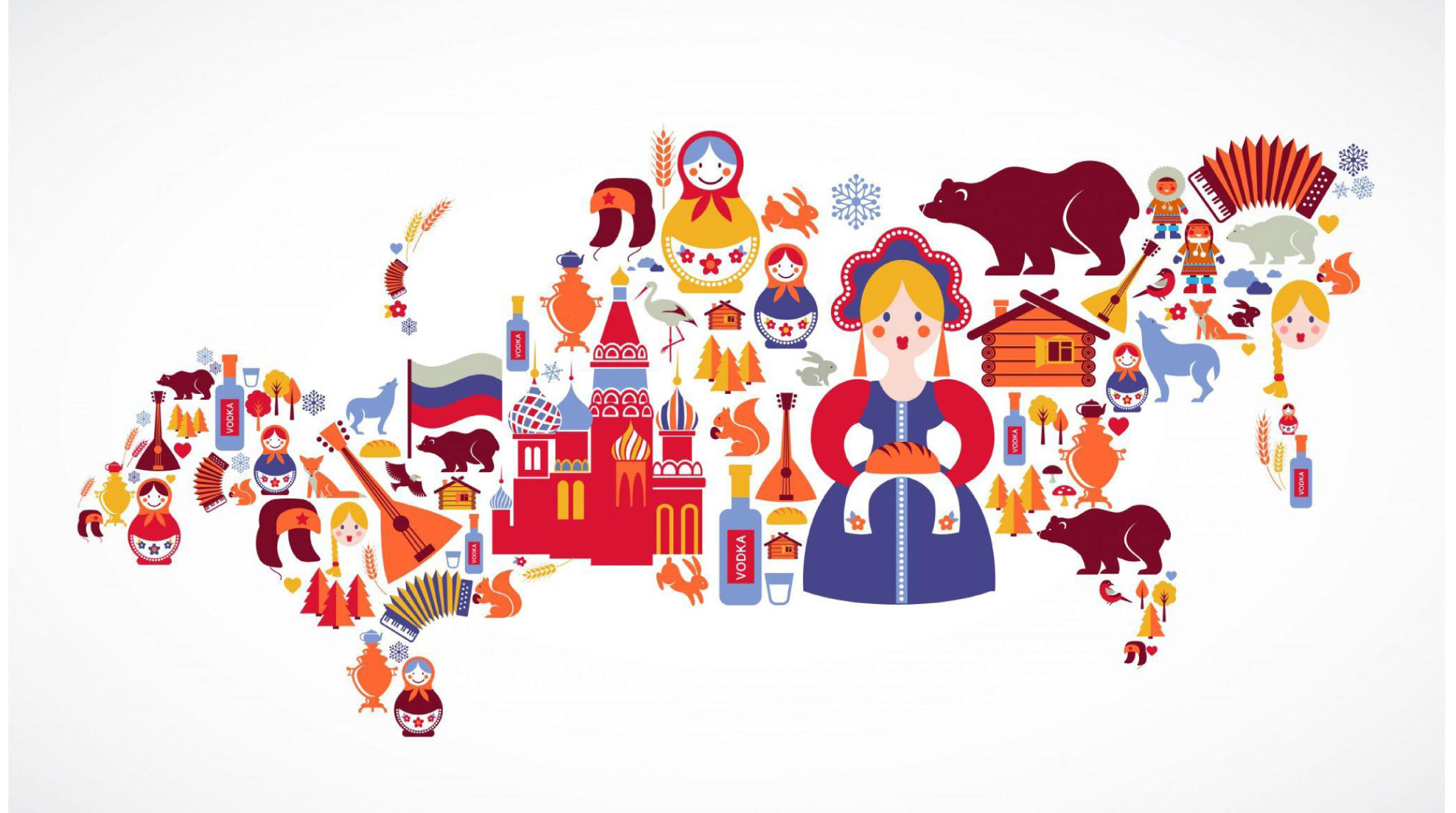
Exploring Medical Education in Russia: A Guide for Foreign Students in 2024:
Russia, renowned for its rich history, diverse culture, and prestigious educational institutions, stands as an enticing destination for medical students from around the globe. As we step into 2024, let’s delve into the landscape of medical education in Russia, offering insights and guidance for aspiring foreign students.Prestigious Universities: Russia boasts a plethora of esteemed medical universities known for their world-class education and cutting-edge research facilities. Institutions like Stavropol State Medical University, Moscow State University of Medicine and Dentistry, Saint Petersburg State Medical University, North caucasus Medical Academy and Novosibirsk State University are among the top choices for medical education.Quality of Education: Russian medical education is characterized by its rigorous curriculum, emphasizing both theoretical knowledge and practical skills. Students benefit from exposure to a diverse range of medical cases, hands-on training in state-of-the-art laboratories, and clinical rotations in renowned hospitals.International Recognition: Degrees obtained from Russian medical universities are internationally recognized, opening doors to career opportunities worldwide. Many universities offer programs taught in English to cater to the needs of international students, ensuring a seamless learning experience.Cultural Immersion: Studying medicine in Russia offers more than just academic enrichment. Foreign students have the opportunity to immerse themselves in Russian culture, language, and traditions, fostering a holistic educational experience.Support for Foreign Students: Russian universities prioritize the well-being and success of their international students, offering comprehensive support services, including accommodation assistance, language classes, and cultural integration programs.Research Opportunities: Russia is at the forefront of medical research, providing ample opportunities for students to engage in groundbreaking research projects and contribute to advancements in healthcare.Conclusion: For foreign medical students seeking a transformative educational experience, Russia in 2024 offers a blend of academic excellence, cultural immersion, and career prospects. With its prestigious universities, quality education, and supportive environment, Russia stands as a beacon of opportunity for aspiring healthcare professionals around the world
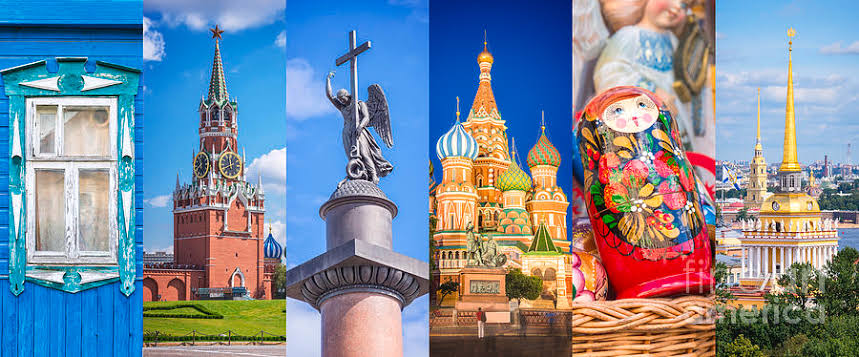
Exploring the Latest Trends in Medical Education Abroad:
Why Russian Medical Colleges Stand Out for Indian Students
In recent years, pursuing medical education abroad has become an increasingly popular choice for Indian students aspiring to become doctors. While several countries offer excellent medical programs, Russian medical colleges have emerged as a top choice for many. In this blog post, we will delve into the latest trends in medical education abroad and explore the benefits that Russian medical colleges offer over other countries for Indian students. Latest Trends in Medical Education Abroad: 1. Global Recognition: With the increasing globalization of healthcare, medical graduates are seeking opportunities to practice medicine internationally. Medical schools abroad often offer globally recognized degrees, providing students with opportunities to pursue residency programs and practice medicine in various countries. 2. Advanced Curriculum: Many medical colleges abroad boast advanced and comprehensive curricula that incorporate modern teaching methodologies, cutting-edge technology, and hands-on clinical training. This exposure to diverse medical practices and techniques enhances students’ knowledge and skills, preparing them for successful careers in medicine. 3. Clinical Experience: Hands-on clinical experience is crucial for medical students to develop practical skills and gain exposure to real-life medical scenarios. Medical colleges abroad often have affiliations with renowned hospitals and healthcare institutions, offering students ample opportunities for clinical rotations and internships. 4. Cultural Immersion: Studying medicine abroad provides students with the opportunity to immerse themselves in a new culture, broaden their horizons, and develop a global perspective. Exposure to diverse cultures and healthcare systems fosters cultural competency and empathy, qualities essential for healthcare professionals. 5. Research Opportunities: Many medical colleges abroad prioritize research and innovation, providing students with opportunities to engage in cutting-edge research projects alongside esteemed faculty members. Participation in research enhances students’ critical thinking abilities and contributes to advancements in medical science. Benefits of Russian Medical Colleges for Indian Students: 1. High-Quality Education: Russian medical colleges are renowned for their high standards of education and rigorous academic programs. Many universities are recognized by prestigious international organizations such as the World Health Organization (WHO) and the Medical Council of India (MCI), ensuring the quality and credibility of their medical degrees. 2. Affordable Tuition Fees: Compared to medical schools in other countries, Russian medical colleges often offer more affordable tuition fees and living expenses along with scholarship programs. This makes medical education in Russia accessible to a broader range of students, including those from lower or middle-income families. 3. English-Medium Programs: Many Russian medical colleges offer English-medium programs specifically designed for international students, eliminating the language barrier and ensuring that students receive instruction in a language they are comfortable with. 4. Clinical Exposure: Russian medical colleges provide extensive clinical exposure through partnerships with top hospitals and healthcare facilities. Students have the opportunity to gain hands-on experience in diverse medical specialties under the guidance of experienced healthcare professionals. 5. Global Recognition: Degrees obtained from Russian medical colleges are recognized globally, enabling graduates to pursue further education or practice medicine in countries around the world, including India. In conclusion, pursuing medical education abroad, particularly in Russian medical colleges, offers Indian students a multitude of benefits, including high-quality education, clinical exposure, cultural immersion, and global recognition. By choosing to study medicine in Russia, students can embark on a rewarding journey towards fulfilling their dreams of becoming compassionate and competent healthcare professionals.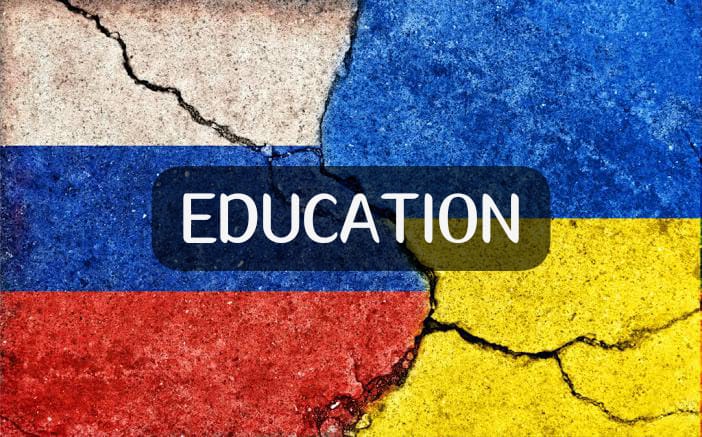
“Thriving amidst Turbulence” – Navigating Higher Education in Russia Amidst the Russia-Ukraine Conflict.
As tensions escalate between Russia and Ukraine, prospective Indian and Asian students may find themselves questioning the stability of pursuing higher education in Russia. However, it’s crucial to separate geopolitical conflicts from academic pursuits and understand the nuanced landscape of higher education in Russia.
The Resilience of Russian Higher Education
Despite the geopolitical tensions, Russian higher education institutions have historically maintained academic integrity and stability. Renowned for their strong emphasis on STEM fields, Russian universities offer world-class education in disciplines ranging from engineering to medicine. Institutions like I.M Sechenov, Moscow State Medical University and Saint Petersburg State Medical University along with Stavropol State Medical University consistently rank among the top in global university rankings, attesting to the quality of education available.
Safety and Security Measures
While the conflict may raise concerns about safety, it’s essential to recognize that most academic institutions prioritize the safety and security of their students. Universities often have robust security measures in place and maintain close communication with local authorities to ensure the well-being of their international student population. Additionally, many universities offer support services for international students, including orientation programs and emergency assistance, to ease their transition to life in Russia.
Scholarships and Financial Assistance
To alleviate financial burdens, Indian and Asian students can explore various scholarship opportunities offered by both Russian and international organizations.
Government-funded scholarships such as the Russian Government Scholarship (also known as the Open Doors Scholarship) and the Global Education Program provide financial assistance to international students pursuing undergraduate, master’s, and doctoral degrees in Russia. Additionally, universities often offer merit-based scholarships and tuition waivers to attract talented students from around the world.
Cultural Adaptation and Integration
Cultural adaptation can be a significant aspect of the international student experience. Fortunately, Russian universities embrace cultural diversity and often organize cultural events, language courses, and intercultural workshops to facilitate the integration of international students into campus life. Engaging with student clubs, participating in extracurricular activities, and exploring the rich cultural heritage of Russia can further enhance the student experience and foster cross-cultural understanding.
Practical Considerations and Future Prospects
Before embarking on their academic journey to Russia, Indian and Asian students should familiarize themselves with visa requirements, healthcare provisions, and accommodation options. Additionally, considering the evolving geopolitical situation, students are advised to stay informed through credible news sources and maintain open communication with university officials.
Despite the current challenges, pursuing higher education in Russia can offer Indian and Asian students invaluable academic and cultural experiences. By staying informed, leveraging available resources, and embracing the opportunities for personal and professional growth, students can navigate the complexities of the Russia-Ukraine conflict and embark on a fulfilling educational journey in Russia.
In conclusion, while geopolitical tensions may cast a shadow of uncertainty, the pursuit of higher education remains a beacon of hope and opportunity for Indian and Asian students in Russia. With resilience, adaptability, and a commitment to academic excellence, students can overcome challenges and thrive in an increasingly interconnected world.
Disclaimer: This blog is intended for informational purposes only and does not constitute legal, financial, or immigration advice.
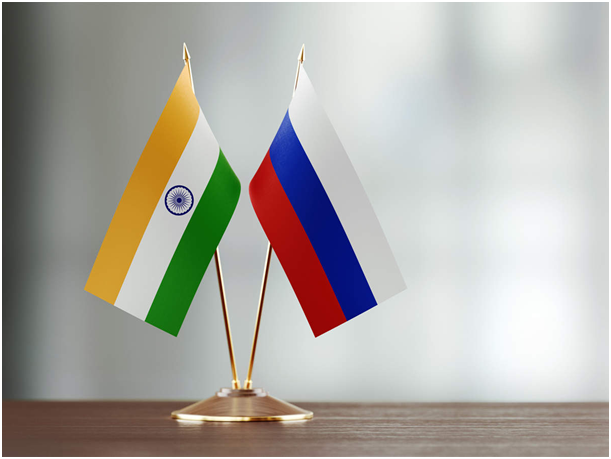
Unlocking a World of Medical Opportunities: MBBS in Russia 2024
In the pursuit of a distinguished medical career, aspiring doctors often find themselves exploring avenues beyond their borders. With the world becoming increasingly interconnected, the opportunities to study medicine abroad have expanded, offering a plethora of advantages and experiences. Among these, Russia stands out as a beacon of excellence in medical education, presenting students with a unique blend of tradition, innovation, and affordability.
As we step into 2024, the landscape of pursuing an MBBS in Russia has never been more promising. Here are some of the latest updates and reasons why choosing Russia for medical studies could be your gateway to a fulfilling career in healthcare:
World-Class Education:
Russian medical universities are renowned globally for their high-quality education standards. With a history dating back centuries, these institutions have consistently produced top-tier medical professionals. In 2024, this tradition of excellence continues, with universities adapting modern teaching methodologies, state-of-the-art facilities, and cutting-edge research opportunities to prepare students for the challenges of modern medicine.
Internationally Recognized Degrees:
One of the most significant advantages of pursuing an MBBS in Russia is the recognition of degrees worldwide. Graduates from Russian medical universities are eligible to practice medicine in various countries, opening doors to a multitude of career opportunities globally. This recognition ensures that your investment in education transcends borders, offering you a truly international career path.
Affordability:
Compared to many Western countries, the cost of studying medicine in Russia remains relatively affordable. Tuition fees and living expenses are often lower, making it an attractive option for students seeking quality education without incurring substantial debt. Additionally, various scholarships and financial aid programs are available to support international students, further easing the financial burden.
Global Networking Opportunities:
The connections forged during your time studying medicine in Russia can prove invaluable throughout your career. With a diverse student body hailing from various countries, you’ll have the chance to build a global network of peers and professionals. These connections can open doors to collaborative research projects, exchange programs, and job opportunities worldwide, enhancing both your personal and professional growth.
Opportunities for Clinical Experience:
Russian medical universities offer extensive clinical exposure, allowing students to gain hands-on experience in diverse healthcare settings. From modern hospitals to rural clinics, students have the opportunity to apply theoretical knowledge in real-world scenarios under the guidance of experienced faculty members. This practical training is invaluable, preparing students to transition seamlessly from the classroom to clinical practice.
Embracing Innovation:
In line with global advancements in healthcare, Russian medical universities are at the forefront of embracing innovation and technology in medical education. From incorporating telemedicine and digital learning platforms to fostering research in emerging fields such as biotechnology and genomics, students are exposed to the latest developments shaping the future of medicine.
In conclusion, pursuing an MBBS in Russia in 2024 offers a gateway to a world of opportunities in medicine. With its world-class education, international recognition, affordability, cultural diversity, networking opportunities, clinical exposure, and commitment to innovation, Russia stands as a compelling choice for aspiring medical professionals. So, if you’re ready to embark on a transformative journey towards a fulfilling career in healthcare, consider Russia as your destination. Your path to becoming a globally competent doctor awaits!
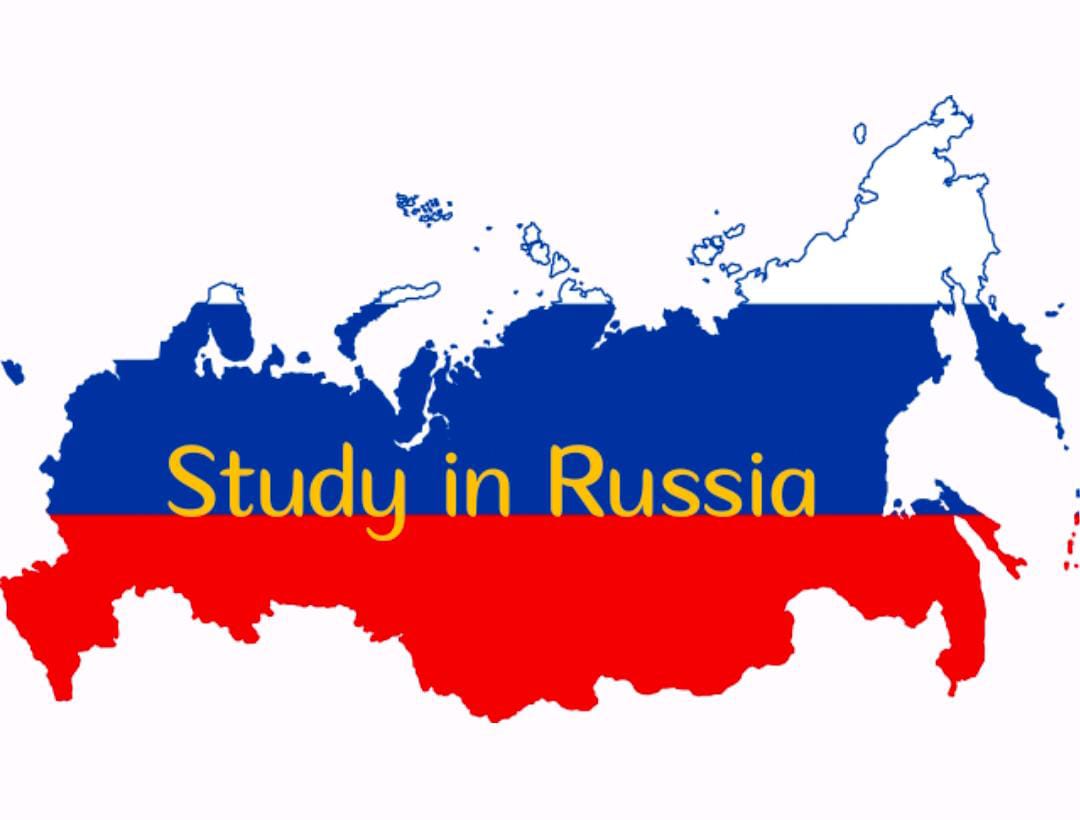
Unveiling Opportunities: – Why Russia is a Premier Destination for Medical Education
In recent years, Russia has emerged as a leading destination for medical education, attracting students from around the globe. The country’s renowned medical universities, state-of-the-art facilities, and rich academic heritage make it an ideal choice for aspiring medical professionals seeking quality education and diverse learning experiences.
1. World-Class Medical Universities:
Russia boasts a network of prestigious medical universities recognized internationally for their excellence in medical education. Institutions such as the Moscow State University of Medicine and Dentistry, Saint Petersburg State Medical University, and Sechenov University are among the top-ranked medical schools worldwide. These universities offer comprehensive medical programs designed to equip students with the knowledge and skills needed to excel in their careers.
2. Advanced Facilities and Resources:
Medical education in Russia is supported by cutting-edge facilities and resources, including modern laboratories, research centers, and teaching hospitals. Students have access to state-of-the-art equipment and technology, providing them with hands-on experience in clinical practice and research. This immersive learning environment enhances students’ understanding of medical concepts and prepares them for real-world challenges in healthcare.
3. Renowned Faculty and Research Opportunities:
Russia’s medical universities boast a faculty of highly qualified professors and researchers who are leaders in their fields. These experts provide students with mentorship, guidance, and invaluable insights into the latest developments in medicine and healthcare. Additionally, students have the opportunity to participate in research projects and clinical trials, contributing to advancements in medical science and gaining valuable research experience.
4. Cultural and Linguistic Diversity:
Studying medicine in Russia offers students the opportunity to immerse themselves in a rich cultural and linguistic environment. Interacting with peers from diverse backgrounds fosters cultural exchange and broadens students’ perspectives. Moreover, many medical programs in Russia are offered in English, eliminating language barriers and making education accessible to international students.
5. Affordability and Quality of Life:
Compared to other Western countries, the cost of medical education in Russia is relatively affordable, making it an attractive option for students seeking quality education without the financial burden. Additionally, Russia offers a high standard of living, with affordable housing, healthcare, and transportation options. Students can enjoy a comfortable lifestyle while pursuing their medical studies in a supportive and welcoming environment.
Conclusion:
Russia’s reputation as a premier destination for medical education continues to grow, driven by its world-class universities, advanced facilities, renowned faculty, cultural diversity, and affordability. Whether aspiring doctors are seeking top-tier education, diverse learning experiences, or opportunities for research and innovation, Russia offers a wealth of opportunities for medical students to thrive and succeed in their careers.
Embark on your journey towards a rewarding medical career in Russia, where opportunities abound and excellence is celebrated. Discover the possibilities awaiting you in one of the world’s leading destinations for medical education.
“Exploring Education: A Comparative Analysis of India and Russia’s Education Systems”
Education forms the cornerstone of societal progress and individual development, shaping the future of nations and generations. India and Russia, two vast and diverse countries with rich cultural histories, boast distinct education systems that reflect their unique social, economic, and political landscapes. In this blog, we’ll delve into the education systems of India and Russia, exploring their similarities, differences, and the opportunities they offer to students.
1. Structure and Organization:
India:
India’s education system follows a hierarchical structure comprising primary, secondary, and higher education levels. The system is governed by various boards, including the Central Board of Secondary Education (CBSE), the Indian Certificate of Secondary Education (ICSE), and state boards. Additionally, there are numerous universities and colleges offering undergraduate, postgraduate, and doctoral programs across various disciplines.
Russia:
Similarly, Russia’s education system encompasses primary, secondary, and higher education levels. It is centralized, with the Ministry of Education and Science overseeing educational policies and standards nationwide. Russian universities are renowned for their strong emphasis on academic rigor and research, offering a wide range of undergraduate and postgraduate programs.
2. Curriculum and Pedagogy:
India: The curriculum in Indian schools and colleges often emphasizes rote learning and theoretical knowledge. While there is a growing emphasis on holistic education and skill development, traditional teaching methods still prevail in many institutions. The curriculum is influenced by cultural and historical factors, with a strong emphasis on subjects like mathematics, science, and languages.Russia: Russian education places a significant emphasis on academic excellence and critical thinking skills. The curriculum is designed to encourage independent thought, creativity, and problem-solving abilities. Practical experience and hands-on learning are integrated into many programs, particularly in technical and scientific fields. Additionally, Russian universities are known for their strong focus on research and innovation.
3. Examination and Assessment:
India: Examinations play a crucial role in the Indian education system, serving as a primary means of evaluation and assessment. Standardized tests, board examinations, and entrance exams are common at various levels of education. The emphasis on high-stakes exams often leads to intense competition among students and places considerable pressure on them to perform well academically.Russia: In Russia, assessment methods vary depending on the level of education and the subject area. While written examinations are common, there is also an emphasis on project-based assessments, oral examinations, and practical demonstrations of skills. Continuous assessment and feedback are integral components of the education process, fostering a more holistic approach to student evaluation.
4. Access and Equity:
India: Despite efforts to improve access to education, India continues to face challenges related to equity and inclusivity. Disparities in access to quality education persist across geographical regions, socioeconomic backgrounds, and marginalized communities. The government has implemented various policies and initiatives to address these disparities, including scholarships, reservation quotas, and outreach programs. Russia: In Russia, access to education is considered a fundamental right, and efforts are made to ensure equal opportunities for all students. Public education is provided free of charge, and there are initiatives in place to support students from disadvantaged backgrounds. However, challenges such as regional disparities and the urban-rural divide still exist, particularly in remote areas.
5. Globalization and Internationalization::
India:
In recent years, India has embraced globalization and internationalization in education, fostering collaborations with foreign universities, promoting student exchange programs, and encouraging cross-cultural learning experiences. Many Indian students choose to pursue higher education abroad, seeking opportunities for academic and professional growth on the global stage.Russia: Similarly, Russia has prioritized internationalization efforts in its education system, attracting students from around the world to study in its universities. The country has established partnerships with universities and research institutions worldwide, facilitating academic exchange and collaboration in various fields. Russian universities actively recruit international students and offer programs taught in English to cater to diverse student populations. In conclusion, while India and Russia have distinct education systems shaped by their unique socio-cultural contexts, both countries share a common commitment to providing quality education and nurturing the next generation of leaders, innovators, and change-makers. By understanding and learning from each other’s strengths and challenges, they can work towards building a brighter future for their societies and the world at large.

The Global Appeal of Medicine: Exploring the Benefits of Foreign Medical Study
In every corner of the world, the profession of medicine stands as a beacon of service, compassion, and expertise. Doctors are revered for their ability to heal, comfort, and advocate for the well-being of individuals and communities alike. It comes as no surprise that medicine remains one of the most chosen and esteemed professions worldwide.
The allure of becoming a doctor transcends geographical boundaries, cultural differences, and socioeconomic disparities. Across continents, aspiring healthcare professionals are drawn to the field for its intrinsic rewards and profound impact on society. The decision to pursue medicine is often fueled by a deep-seated desire to make a meaningful difference in the lives of others, to alleviate suffering, and to contribute to the advancement of healthcare.One of the pathways to realizing this noble calling is through foreign medical study. Opting to pursue medical education abroad opens doors to a plethora of opportunities and advantages:
1. Global Perspective:
Immersion in a foreign medical school exposes students to diverse cultures, healthcare systems, and medical practices. This cross-cultural exposure fosters a broader understanding of health disparities, social determinants of health, and global health challenges.
2. 2. World-Class Education:
Many renowned medical institutions around the world offer cutting-edge facilities, innovative teaching methodologies, and expert faculty members. Students benefit from access to state-of-the-art resources, research opportunities, and clinical training experiences that enrich their medical education.
3. Cultural Competence:
Studying abroad cultivates cultural competency, interpersonal skills, and adaptability. Interacting with patients, peers, and healthcare professionals from diverse backgrounds enhances communication skills, fosters empathy, and promotes effective collaboration in multicultural settings.4. Career Opportunities: Graduates of foreign medical programs often enjoy diverse career prospects and pathways. Whether pursuing residency training, subspecialty fellowships, or academic positions, international medical graduates bring unique perspectives and experiences to their professional endeavors.
5. Global Mobility:
Obtaining a medical degree from a reputable institution abroad can facilitate licensure and practice opportunities in multiple countries. This global mobility empowers healthcare professionals to pursue career opportunities, research collaborations, or humanitarian efforts on an international scale.However, embarking on a journey of foreign medical study requires careful consideration and thorough preparation. Prospective students must navigate the intricacies of admissions requirements, visa procedures, and financial considerations. Moreover, acclimating to a new academic environment, adapting to cultural nuances, and overcoming language barriers may present initial challenges.
In conclusion, the decision to pursue medicine as a career is both a privilege and a profound responsibility. Foreign medical study offers a transformative educational experience that enriches students’ medical knowledge, cultural awareness, and professional growth. By embracing the benefits of global medical education, aspiring doctors can embark on a journey of lifelong learning, service, and leadership in the pursuit of global health equity and excellence.
top medical universities in russia
mbbs in europe fee structure
list of medical colleges in russia for indian students
About Us
A. J. T. Educational Consultancy
Is a prime educational consultancy in India, Malaysia and other Asian countries. It is well known that the medical profession is among the most popular respected and attractive career choices in India.
Offices
Toll Free Number :
1800-891-6455
Chennai:
044 – 26614485 | 25322021 |+91 98406 52729 | 98408 88071 | 93800 05652
Madurai :
0452 – 2621088 | 9840800632 | +91 : 93441 59534 | 9840454604
Delhi :
011- 45706691 | 46242299 |
+91 9810 132 299 / 9599240873
Regional and Branch Office
Bangalore
: 09886863393 | (080)-26670932Kerala:
9884660866Hyderabad :
9092394805 | 7337021013 | 7330671013
M.P
: 7583010111Punjab
: 8699836343Bihar
: 7250393666 | 9546652746Manipur :
8974930350Overseas Branches
Stavropol:
(+7)9887034221 | 9887452692 | 9881165870Volgograd:
(+7) 9272539395Hyderabad:
9 092394805 | 7337021013 | 7330671013Moscow:
(+7) 9671569161 | 9260777486UAE – Dubai:
(+971-50) 6927593 Partner With Us
Partner With Us Latest Event
Latest Event Apply Now
Apply Now
AJ Trust Consultancy – MBBS in Russia, Russian MBBS consultant in Chennai |
Proudly Powered by Trivam Techno Solutions.
